#Metaverse Platform Creation
Explore tagged Tumblr posts
Text
As the metaverse continues to evolve, the demand for high-quality, engaging content has never been greater. This virtual universe is not just about immersive experiences; it’s also about the narratives, interactions, and creativity that bring those experiences to life. In India, one company stands out as a leader in this space: Simulanis Solutions. As a premier Metaverse Content Creation Company, Simulanis is dedicated to crafting compelling content that captivates users and enhances their journey through the metaverse.
#Metaverse Content Development#Metaverse Game Development#Virtual Reality Metaverse Content#Augmented Reality Metaverse Solutions#3D Metaverse Design#Immersive Metaverse Experiences#Metaverse App Development#Metaverse Animation Studio#Metaverse Platform Creation#Custom Metaverse Environments#Metaverse Virtual World Design#Metaverse Content Creation Agency#Metaverse Real Estate Development#Metaverse Architecture Services#Interactive Metaverse Solutions#Metaverse Digital Twins#Metaverse Experience Designers#NFT and Metaverse Content#Metaverse VR/AR Integration#Metaverse Integration Services
0 notes
Text
The Human Impact of Generative AI
Shaping Tomorrow: How Generative AI Empowers People and Transforms Work

The Metaverse and Generative AI: Creating Immersive Experiences
Generative AI is swiftly transforming the landscape of numerous industries by enabling more efficient workflows and sparking once-impossible innovations. At the heart of this transformation is the capacity of generative AI to automate complex processes and generate new content, from visuals to code, thereby enhancing productivity and creative potential. This article sheds light on how generative AI is revolutionizing various sectors, improving communication through advanced natural language processing, personalizing experiences in healthcare, and even redefining content creation and software development.
The Power of Text-to-Image and Image-to-Image Generation
Generative AI technologies are redefining creativity and design by allowing for the seamless generation of visual content from textual descriptions. This capability accelerates the creative process and democratizes design capabilities, making them accessible to professionals without deep graphic design skills. Industries such as marketing and entertainment are reaping immense benefits from these advancements. For instance, graphic designers can now produce bespoke visuals in minutes, significantly reducing project turnaround times and allowing for greater scalability in creative projects, thereby enhancing business productivity.
This integration across business functions showcases the substantial efficiency gains that can be achieved, enabling companies to tailor their marketing materials quickly and in alignment with consumer preferences without requiring extensive manual effort.
Revolutionizing Software Development with Code Generation and Completion
Integrating generative AI into software development drastically enhances the efficiency and accuracy of coding processes. By automating mundane coding tasks, AI-powered tools free developers to focus on more complex and innovative aspects of software design. These advancements are not just about speeding up development but are transforming how software is created, tested, and deployed.
AI-Powered Coding Assistants
AI coding assistants like GitHub Copilot have been at the forefront of this transformation. According to a GitHub survey, developers using these AI tools report a 55% increase in productivity. These assistants leverage vast code repositories to offer real-time suggestions and complete lines of code, significantly speeding up the development process and reducing bugs.
For example, GitHub Copilot acts like a pair programmer, suggesting entire blocks of code based on natural language comments or a few lines of code. This greatly speeds up the coding process and enhances code quality by suggesting industry-standard practices and reducing errors.
Startups Leading the Charge in AI-Driven Code Generation
Several innovative startups are making waves in this space by focusing on specific niches of the development process
Tabnine - This tool uses machine learning to provide code completions for developers, supporting over a dozen programming languages. Its model learns from the codebase it's working on, offering tailored suggestions that improve over time.
Replit- Aimed at making coding more accessible, Replit provides a collaborative browser-based IDE with AI-powered coding assistance. It's particularly popular among educators and learners, democratizing access to coding tools and environments.
Codota- Like Tabnine, Codota offers intelligent code completions driven by AI. It integrates seamlessly with popular IDEs like IntelliJ and WebStorm, streamlining the development workflow by predicting needs and reducing repetitive coding tasks.
The Future of AI in Software Development
The trajectory of AI in software development points toward more integrated systems where AI tools assist with code and planning, testing, and deployment processes. These tools are expected to become more predictive, using historical data to guide development strategies and optimize team workflows.
By integrating AI into software development, the industry is seeing increased productivity and a shift in the developer's role from coder to innovator. As AI continues to evolve, the future of coding looks set to be more intuitive, creative, and, importantly, more efficient.
AI-Powered Content Creation: A New Era
The advent of generative AI is reshaping the landscape of content creation across multiple platforms. From crafting engaging blog posts to generating dynamic social media content and personalized emails, AI tools play a pivotal role in automating content generation, saving time, and maintaining a high standard of creativity and relevance.
Enhancing Productivity and Creativity
AI content generation tools are a boon for content creators, as they significantly reduce the time spent on content production. According to case studies from Jasper AI, thanks to AI assistance, content creators save an average of 3-4 hours per week. This time savings translates directly into increased productivity, allowing creators to focus more on strategy and less on the mechanics of content creation.
For instance, platforms like Jasper AI offer a range of content creation tools that automate the writing process, from first draft to finished piece, while ensuring the content is engaging and tailored to the audience. Similarly, Writesonic provides tools to enhance marketing content, enabling businesses to produce ads, product descriptions, and marketing copy quickly and efficiently.
The Role of AI in Personalization
Beyond sheer output, AI's real power in content creation lies in its ability to personalize content. By analyzing user behavior and preference data, AI can tailor content to meet the nuanced demands of different audience segments. This level of personalization is particularly effective in marketing, where tailored content can significantly improve engagement rates and conversions.
Navigating Challenges
While the benefits are substantial, using AI in content creation also presents challenges, particularly regarding the originality and authenticity of the content. To address this, many AI platforms are incorporating advanced algorithms that generate content and ensure that it is unique and aligns with the brand's voice. Additionally, a growing emphasis is on blending human creativity with AI efficiency to produce innovative and genuine content.
AI Tools Transforming the Content Landscape
Several other tools and platforms are at the forefront of this AI-driven content revolution
Grammarly leverages AI to correct grammar and enhance the tone and clarity of the text, making it more effective and audience-appropriate.
Articoolo creates unique textual content from scratch, simulating a human writer and significantly shortening the content development cycle
Advancements in Natural Language Processing: Understanding and Communicating Better
Natural language processing (NLP) is the heart of generative AI, enabling machines to understand and interact using human language. This technology has seen significant advancements in recent years, leading to improved communication tools and a deeper understanding of textual data across industries.
Enhanced Communication Tools
One of the most visible impacts of advanced NLP is improving communication tools such as chatbots and virtual assistants. These AI-driven systems can now handle complex conversations, understand nuances, and provide increasingly indistinguishable responses from human interactions. For instance, chatbots powered by sophisticated NLP models are used in customer service to respond instantly to customer inquiries, reducing wait times and improving customer satisfaction.
Sentiment Analysis and Translation
NLP is also pivotal in sentiment analysis, where AI models assess the emotional tone behind text data. This is incredibly useful for businesses to gauge customer sentiment from reviews, social media posts, and other interactions. Machine translation has benefited immensely from NLP, enabling more accurate and context-aware translations that are crucial in global communications.
Real-World Applications of NLP
Customer Service : AI-enhanced chatbots can now provide 24/7 customer service, precisely handling inquiries and redirecting complex issues to human operators.
Market Analysis : NLP tools analyze vast amounts of data from market research to provide insights into consumer behavior, trends, and preferences.
Healthcare : In the medical field, NLP is used to interpret and classify clinical documentation, helping in faster and more accurate patient diagnoses.
Cutting-Edge NLP Technologies
Platforms like OpenAI's GPT -4 are leading the charge in NLP technology. This model has set new standards for language models with its ability to generate coherent and contextually relevant text based on minimal input. This model and others like it are enhancing existing applications and paving the way for new uses that were previously unimaginable.
Challenges and Ethical Considerations
Despite its advancements, NLP faces challenges, particularly in bias and ethical use. Ensuring that AI systems do not perpetuate existing biases in training data is a significant concern that requires ongoing attention and refinement. Moreover, as NLP systems become more integrated into daily activities, privacy and data security questions become more pressing.
Generative AI in Healthcare and Drug Discovery: Accelerating Progress
Accelerating Drug Discovery
One of AI's most impactful applications in healthcare is accelerating the drug discovery process. Traditional drug development is notoriously time-consuming and costly, often taking over a decade and billions of dollars to bring a new drug to market. AI models can predict the effectiveness of compounds much faster than traditional experimental methods, reducing the time and financial investments required. For example, AI systems can simulate the interaction between drugs and biological targets to identify promising candidates for further development, thereby streamlining the early stages of drug discovery.
A McKinsey report highlights that AI has the potential to halve the time required for drug discovery, suggesting a reduction in timelines from 10 years to just five years. This not only speeds up the availability of new medications but also significantly cuts down on R&D costs.
Personalized Medicine
Beyond drug discovery, generative AI enhances personalized medicine, where treatments are tailored to individual patients. By analyzing genetic data, AI systems can predict how patients respond to various therapies, allowing for more personalized and effective care. This approach is particularly transformative in fields like oncology, where understanding the specific genetic makeup of a tumor can guide more targeted and effective treatment strategies.
AI in Medical Imaging
Another critical area where AI is making strides is in medical imaging. AI algorithms can process images faster and often more accurately than human radiologists, identifying subtle patterns that might be overlooked. Tools like Google Health's AI model for breast cancer screening, which has been shown to improve the accuracy of detecting breast cancer in mammograms, exemplify the potential of AI to enhance diagnostic accuracy and improve patient outcomes
Ethical Considerations and Challenges
While the benefits are substantial, integrating AI in healthcare raises significant ethical and privacy concerns. Data security, consent for using personal medical data, and ensuring AI does not perpetuate existing healthcare disparities must be addressed. These challenges require robust regulatory frameworks and ongoing oversight to ensure that the benefits of AI in healthcare are realized without compromising patient trust or safety.
AI-Driven Personalization: Tailoring Experiences for Maximum Impact
Artificial intelligence significantly enhances personalization across various sectors, transforming how services and content are delivered to meet individual preferences and needs. This customization is crucial in e-commerce, education, and media, where tailored experiences can significantly boost user engagement and satisfaction.
Personalized Recommendations
In e-commerce, AI-driven personalization engines analyze user behavior, past purchases, and browsing history to recommend products that users are more likely to purchase. Companies like Amazon and Netflix are renowned for using AI to generate personalized recommendations, which enhances the user experience and increases revenue through improved conversion rates.
Customized Learning Experiences
AI personalization in education revolutionizes learning by adapting content to fit each student's learning pace and style. Platforms like Khan Academy use AI to offer a customized learning path for each user, making education more accessible and effective by addressing individual learning needs and preferences. This approach helps identify areas where students struggle and provide targeted exercises to improve their understanding and retention of the subject matter.
Personalized AI-Powered Content Creation
AI is also making strides in personalized content creation. Tools like Grammarly and Quill Bot tailor writing aids to the user's style and preferences, improving written communication's clarity, tone, and grammaticality. This personalization enhances the writing process and ensures the content effectively conveys the intended message.
Business Benefits
Personalization can lead to significant business benefits, including increased customer loyalty and spending. A study by Deloitte found that companies that leverage consumer behavior insights through personalization see revenue increase by 6% to 10%, which is two to three times higher than those that don't. Personalized marketing campaigns ensure that customers receive messages that resonate with their specific needs and preferences, greatly enhancing the effectiveness of marketing efforts.
Democratizing Development: Low-Code/No-Code Platforms
The rise of low-code and no-code platforms marks a significant shift in how software and applications are developed. These platforms democratize the ability to build complex systems without extensive programming knowledge. This technology enables a broader range of people, including those without formal coding expertise, to create applications, automate workflows, and contribute to digital transformation efforts within their organizations.
Empowering Non-Technical Users
Low-code and no-code platforms such as Microsoft PowerApps, Google AppSheet, and Bubble empower non-technical users to build applications through intuitive graphical user interfaces. These platforms provide drag-and-drop components, pre-built templates, and simple logic formulas, making it easier for non-developers to bring their ideas to life quickly and efficiently.
Reducing Development Time and Costs
The impact of these platforms on development time and cost is profound. By simplifying the development process, low-code and no-code platforms can reduce the time to develop and deploy applications by up to 90%. This reduction accelerates innovation within companies and significantly cuts costs associated with traditional software development, such as hiring specialized development staff and lengthy project timelines.
Enhancing Business Agility
Companies utilizing low-code/no-code platforms can enhance their agility by quickly adapting to changing market conditions and business needs. These tools allow businesses to prototype and iterate on solutions rapidly, enabling a more responsive approach to customer needs and market dynamics.
Case Studies
Microsoft PowerApps has enabled companies to build custom business apps that connect to their data stored in the underlying data platform (Microsoft Dataverse) or in various online and on-premises data sources.
Bubble allows users to design interactive, multi-user apps for desktop and mobile browsers. Users can create web applications ranging from simple prototypes to complex SaaS applications without writing a single line of code.
Challenges and Considerations
While low-code and no-code platforms offer numerous benefits, they also present challenges, such as limited customization for complex requirements and potential issues with scaling as needs grow. Moreover, reliance on these platforms can lead to vendor lock-in, where businesses depend on the platform's capabilities and pricing structures.
The Future of Low-Code/No-Code
As these platforms mature, they are expected to become more robust, offering greater flexibility, integration options, and advanced features that cater to more complex development needs. The evolving landscape of low-code/no-code technology promises to blur the lines between technical and non-technical users, fostering a more inclusive environment for innovation across industries.
Scaling low-code and no-code platforms has inherent limitations and challenges that can impact their effectiveness, especially as organizational needs grow and become more complex. Here's a closer look at some of these limitations and how they might affect the broader adoption and scalability of these platforms
Customization and Flexibility
Limited Customization: Low-code and no-code platforms offer significant ease of use and speed through pre-built templates and drag-and-drop interfaces. However, they often need more flexibility for more complex, customized solutions. Businesses may find that these platforms can only sometimes accommodate the specific requirements or unique processes that differentiate them from their competitors.
Integration Issues: As organizations scale, the need to integrate with other systems and data sources increases. Low-code and no-code platforms sometimes need help with complex integrations or more support for specific external APIs, limiting their utility in a fully integrated tech ecosystem.
Performance and Scalability
Performance Constraints: Applications built on low-code/no-code platforms can suffer performance issues as user numbers increase and data loads become heavier. These platforms may need to be optimized for high-performance scenarios, leading to slower response times and reduced user satisfaction.
Scalability Challenges: Scaling applications built with low-code/no-code tools can be problematic, especially when dealing with large volumes of data or high transaction rates. While some platforms are improving their capabilities in this area, there remains a significant gap compared to custom-developed applications.
Security and Compliance
Security Concerns: The ease of application development also comes with the risk of creating security vulnerabilities, particularly if the platform does not enforce strict security standards. Organizations must be vigilant about the security aspects of applications developed through low-code/no-code platforms, especially when handling sensitive data.
Compliance Issues: Regulatory compliance can also be a concern, as the automatic code generation and data handling procedures of low-code/no-code platforms might not automatically align with specific industry regulations, such as GDPR or HIPAA, requiring additional oversight to ensure compliance.
Maintenance and Support
Dependence on Vendors: Using low-code/no-code platforms often means relying on the vendor for updates, security patches, and new features. This dependence can lead to issues if the platform does not evolve in line with the latest technological developments or if vendor support is lacking.
Technical Debt: Applications built on low-code/no-code platforms can accumulate technical debt if not properly maintained. This can lead to increased costs and resources being diverted to manage and upgrade legacy systems initially developed to save time and money.
Moving Forward with Low-Code/No-Code
Despite these limitations, strategic use of low-code and no-code platforms can still benefit many organizations, especially when used for specific purposes where the advantages outweigh the drawbacks. Businesses should carefully evaluate their long-term needs and choose platforms with the best ease of use, flexibility, and scalability. Understanding these limitations will help organizations make informed decisions about when and how to incorporate low-code and no-code solutions into their IT strategy, ensuring they can maximize the benefits while mitigating potential downsides.
AI-Enabled Cybersecurity: Staying Ahead of Threats
Artificial intelligence (AI) has emerged as a crucial ally in the rapidly evolving cybersecurity landscape. With cyber threats becoming more sophisticated and frequent, AI technologies are pivotal in enhancing defenses by automating detection, response, and prevention strategies. This integration of AI in cybersecurity is not just a trend but a necessary evolution to cope with the scale and complexity of modern cyber threats.
Enhanced Threat Detection
AI excels in identifying patterns and anomalies, which makes it ideal for threat detection. Machine learning algorithms can analyze vast amounts of data from network traffic, logs, and past incidents to identify unusual behavior that may signify a security breach. This capability allows for real-time threat detection, significantly reducing the time between infiltration and response.
Automated Response Systems
Once a threat is detected, the speed of response is critical. AI-powered systems can respond to threats faster than human teams, automating certain responses to common types of attacks. Rapid response capability can mitigate the effects of attacks, stopping them before they spread throughout the network or result in significant data loss.
Vulnerability Management
AI also aids in vulnerability management by identifying weak points in the network before attackers can exploit them. By continuously scanning systems and software for vulnerabilities and comparing them against emerging threats, AI systems can prioritize vulnerabilities that pose the most immediate risk, guiding cybersecurity teams on where to focus their remediation efforts.
Predictive Capabilities
One of the most promising aspects of AI in cybersecurity is its predictive capabilities. By learning from historical data, AI can predict the types of attacks likely to occur, enabling organizations to prepare defenses proactively rather than reactively. This forward-looking approach helps maintain a stronger security posture and better preparation against potential threats.
Challenges and Ethical Considerations
While AI significantly enhances cybersecurity efforts, it raises privacy and ethical data use challenges. The vast amounts of data required to train AI models must be handled responsibly to ensure privacy protections are not compromised. Furthermore, as AI systems become more autonomous in making security decisions, establishing clear accountability for decisions made by AI is crucial.
Embracing the Future with Generative AI
As explored throughout this article, generative AI is not just a technological advancement but an exponential shift recasting industry models, enhancing human creativity, and redefining what is possible in the digital age. From revolutionizing content creation to reshaping software development and pushing the boundaries in healthcare, AI's impact is profound and far-reaching.
Advancements in natural language processing have improved how we interact with machines, making them more intuitive and responsive. In cybersecurity, AI's predictive capabilities are setting new standards for protection, staying one step ahead of evolving threats. Meanwhile, in the realms of personalization and education, AI is creating experiences that are more tailored and impactful than ever before. However, the journey does not end here. The future holds even greater potential as we continue to innovate and integrate AI into various facets of our lives and work. The opportunities to leverage AI for driving growth, efficiency, and creativity are limitless, and the time to act is now.
Engage with Coditude
Are you ready to harness the power of generative AI to transform your business? Connect with Coditude today and join us at the forefront of this exciting revolution. Our team of experts is dedicated to helping you explore the vast possibilities of AI, from developing custom AI solutions to integrating AI-driven processes into your existing systems. Whether you're looking to enhance your cybersecurity defenses, streamline your content creation, or tap into AI's powerful analytics for strategic insights, Coditude is here to guide you every step of the way. Let's build the future together—innovative, efficient, and brighter than ever.
#Generative AI#AI powered content creation#NLP#AI enabled cyber security#Metaverse#Generative AI technologies#AI in healthcare#AI in software development#Low code platform#AI enhanced communication#text to image generation#image to image generation
1 note
·
View note
Text
Powering imagination
Welcome to Roblox, the online game platform with millions of user created experiences. We also like money and to do things because "it's fun"
@blox-cards-unofficial and @adopt-me-roblox are my wonderful creations :3
Proud son of
@realsafari @important-question-anon and @totally-peacock-i-swear
With all being said, go explore this vast metaverse!
65 notes
·
View notes
Text
The Future of Social Media
The Future of Social Media: Trends and Innovations Shaping the Digital Landscape
Social media has transformed how we communicate, shop, and consume information. With over 5 billion social media users globally, platforms like Facebook, Instagram, TikTok, and LinkedIn have become integral to our daily lives. But as technology evolves, social media is poised for even more significant changes. Let’s explore the future of social media, the key trends shaping its growth, and what businesses and users can expect in the coming years.
1. Rise of AI and Automation
Artificial Intelligence (AI) is set to revolutionize social media by personalizing user experiences and automating content creation. ✅ AI-Driven Content: Platforms will use AI to create and suggest highly relevant content based on user behavior. ✅ Chatbots and Customer Service: AI-powered chatbots will provide instant responses and customer support. ✅ Enhanced Algorithm Efficiency: AI will refine algorithms to boost content visibility and engagement.
👉 Example: TikTok’s AI-based algorithm curates content precisely to user preferences, keeping users engaged for longer periods.
2. Growth of Short-Form Video Content
Short-form videos have become the preferred content format, thanks to platforms like TikTok, Instagram Reels, and YouTube Shorts. ✅ Higher Engagement: Short videos have higher engagement rates due to their fast-paced and interactive nature. ✅ Monetization Opportunities: Platforms are introducing more ways for creators to earn through video content. ✅ Live Streaming: Live videos drive real-time engagement and foster a stronger connection with audiences.
👉 Example: Instagram Reels and YouTube Shorts have gained massive traction, encouraging brands to shift to short-form content.
3. Expansion of Social Commerce
Social media is no longer just for networking—it’s becoming a powerful e-commerce platform. ✅ Shoppable Posts: Platforms like Instagram and Pinterest allow users to buy products directly from posts. ✅ Influencer Marketing: Brands are investing heavily in influencer partnerships to drive sales. ✅ Livestream Shopping: Real-time product demonstrations and Q&A sessions boost consumer trust and conversions.
👉 Example: TikTok Shop and Instagram Checkout make it easy for users to purchase without leaving the app.
4. Rise of Decentralized Platforms
Concerns about data privacy and platform control have fueled the rise of decentralized social media. ✅ Blockchain Integration: Platforms using blockchain technology will offer greater transparency and user control. ✅ User-Owned Content: Decentralized networks will give users more control over their data and content. ✅ Reduced Censorship: Decentralization reduces the influence of large corporations on content moderation.
👉 Example: Platforms like Mastodon and Bluesky are gaining attention for their decentralized, user-driven models.
5. Influence of Virtual and Augmented Reality (VR & AR)
The Metaverse is driving the integration of VR and AR into social media experiences. ✅ Virtual Meetups: Users will engage in virtual hangouts and events using avatars. ✅ AR Filters and Lenses: Enhanced AR features will create more immersive and interactive content. ✅ Virtual Stores: Brands will launch virtual showrooms where users can explore products in 3D.
👉 Example: Snapchat’s AR lenses and Meta’s Horizon Worlds are early examples of this shift.
6. Increasing Role of Personalization
Social media will become more tailored to individual users’ preferences and behaviors. ✅ Custom Feeds: Platforms will offer more control over what content users see. ✅ Dynamic Ads: Advertisers will target users with highly personalized and relevant ads. ✅ User-Curated Content: Users will have more options to customize and control their content experience.
👉 Example: Netflix and Spotify have already set the standard for content personalization—social media is next.
7. Focus on Data Privacy and User Security
As privacy concerns grow, platforms will need to strengthen user data protection. ✅ End-to-End Encryption: Private messages and data will be encrypted to protect user privacy. ✅ Minimal Data Collection: Platforms will reduce data tracking to build user trust. ✅ User Consent: Users will have more control over how their data is shared and used.
👉 Example: Apple’s privacy updates and Google’s cookie phase-out reflect this shift toward stronger data protection.
8. Rise of Niche and Community-Based Platforms
Users are moving toward smaller, interest-based communities rather than large social networks. ✅ Specialized Platforms: Platforms focused on specific interests (e.g., fitness, gaming, fashion) will grow. ✅ Stronger User Engagement: Smaller communities foster deeper connections and higher engagement. ✅ Subscription Models: Exclusive content and community access will drive monetization.
👉 Example: Discord and Reddit thrive on niche, interest-based communities.
9. Greater Use of Influencer and Creator-Led Content
Influencers and content creators will continue to dominate social media marketing. ✅ Micro-Influencers: Brands will focus more on micro-influencers for higher engagement and authenticity. ✅ Creator Monetization: Platforms will introduce more revenue-sharing options for creators. ✅ Brand-Influencer Collaborations: Direct collaborations will become more strategic and long-term.
👉 Example: TikTok and Instagram’s creator funds encourage influencers to produce more content.
10. Integration of AI-Generated Content and Deepfakes
AI-generated content and deepfakes will become more common—and controversial. ✅ AI-Driven Ads: Brands will use AI to create hyper-personalized ad campaigns. ✅ Deepfake Risks: Platforms will need to regulate AI-generated content to prevent misinformation. ✅ Creative Opportunities: AI tools will enable more creative content production at lower costs.
👉 Example: AI-generated influencers like Lil Miquela have already gained significant social media followings.
How Businesses Can Prepare for the Future of Social Media
✔️ Invest in Short-Form Video: Focus on platforms like TikTok, Reels, and Shorts for maximum reach. ✔️ Prioritize Authenticity: Engage with audiences using real and relatable content. ✔️ Embrace Personalization: Use AI-driven insights to deliver more targeted content. ✔️ Adapt to Privacy Changes: Align your strategy with evolving data privacy regulations. ✔️ Experiment with AR and VR: Integrate immersive experiences to enhance user engagement.
Conclusion
The future of social media will be shaped by AI, short-form video, social commerce, and greater personalization. For businesses and creators, staying ahead of these trends is essential to remain competitive and engage with evolving consumer preferences. As platforms evolve, those who embrace innovation and adapt quickly will thrive in the next phase of social media’s growth.

3 notes
·
View notes
Text
The Future of Social Media: Trends and Transformations by 2030
Social media has revolutionized how we connect, communicate, and consume content. But as we look ahead, it’s evident that platforms will undergo even more transformative changes. From the rise of artificial intelligence (AI) to immersive experiences in the metaverse, the future of social media is poised to reshape digital interaction. Let’s explore the key trends and innovations expected to define the next era of social media.
1. AI-Driven Personalization and Content Creation
AI algorithms will become more sophisticated, providing hyper-personalized content to users. Expect platforms to predict and curate content that aligns perfectly with individual preferences, reducing noise and enhancing engagement. Moreover, AI-driven tools will empower creators to produce high-quality videos, images, and written content with minimal effort. Chatbots and virtual influencers will also enhance brand-customer interactions, making customer support seamless.
2. The Rise of the Metaverse and Immersive Experiences
The concept of the metaverse will continue to gain traction, providing users with virtual spaces for social interaction, commerce, and entertainment. Social media platforms will integrate with virtual reality (VR) and augmented reality (AR) technologies, offering immersive experiences where users can attend events, shop, and interact in 3D environments. Expect virtual storefronts and branded virtual experiences to become common.
3. Decentralized Platforms and Digital Ownership
With growing concerns about data privacy and content ownership, decentralized social media networks powered by blockchain technology will emerge. These platforms will offer users more control over their data and provide transparency in content monetization. Non-Fungible Tokens (NFTs) will further enable digital ownership and monetization for creators. Users may own virtual spaces and digital art within the metaverse, fostering a more equitable digital economy.
4. Social Commerce Expansion
Social commerce will continue to thrive as platforms enhance in-app shopping experiences. Users will seamlessly discover, purchase, and review products without leaving the app. Livestream shopping, AR try-on features, and AI-driven recommendations will redefine e-commerce on social platforms. Direct payments and integrated wallets will make transactions smoother.
5. Ephemeral and Authentic Content Growth
Short-form, temporary content will remain popular, fostering authentic interactions. Features like stories, reels, and disappearing messages will encourage genuine connections, emphasizing relatability over perfection. Brands will leverage this trend to build trust and transparency with their audience.
6. Enhanced Influencer and Creator Economy
The creator economy will flourish, with platforms introducing more monetization options. Subscription models, virtual gifts, and exclusive content will provide creators with diversified income streams. Brands will increasingly collaborate with micro and nano influencers for more authentic brand promotions. Additionally, AI-powered content creation tools will allow creators to scale their output without compromising on quality.
7. AI-Powered Moderation and Ethical Considerations
To combat misinformation and ensure safer online environments, AI-powered moderation tools will play a pivotal role. Platforms will adopt advanced algorithms to detect harmful content while maintaining transparency and fairness in content governance. Ethical AI considerations will become a priority, ensuring responsible content management without compromising freedom of speech.
8. Sustainability and Social Impact
Social media platforms will focus on sustainability initiatives by promoting eco-friendly practices and reducing digital carbon footprints. Expect to see campaigns that emphasize environmental awareness and corporate social responsibility (CSR). Users will hold brands accountable for their sustainability efforts.
9. Multi-Platform Integration and Seamless Experiences
Future social media platforms will integrate seamlessly with other digital services. Cross-platform content sharing, unified notifications, and integrated messaging will enhance user convenience. AI assistants may help users navigate through multiple platforms effortlessly.
Conclusion
The future of social media is both exciting and dynamic. As technology evolves, so will the ways we engage, share, and connect. For businesses and creators, staying ahead of these trends will be essential to harness the full potential of emerging platforms.
Are you ready to embrace the future of social media? Stay informed, stay creative, and keep exploring the limitless possibilities that await in this ever-evolving digital landscape.

3 notes
·
View notes
Text
NFTs and TreasureNFT
Unlock the Future of Digital Assets with TreasureNFT: Your Gateway to NFT Earnings.

The global of digital property is evolving swiftly, and TreasureNFT is leading the way in this revolution. If you are curious about NFTs (Non-Fungible Tokens) and how they could transform your monetary destiny, now could be the appropriate time to dive in. TreasureNFT isn’t only a platform—it’s your price tag to coming across the vast potential of NFTs even as earning tremendous rewards. Ready to take manipulate of your virtual future? Let’s discover how TreasureNFT can open new doorways to incomes possibilities!
What Is TreasureNFT?
TreasureNFT is a groundbreaking platform that makes NFTs on hand to absolutely everyone—whether or not you're a seasoned crypto seasoned or just starting. With its user-friendly interface, TreasureNFT permits you to create, buy, promote, and change NFTs resultseasily. Combining the contemporary blockchain generation with an intuitive design, TreasureNFT ensures that you may maximize your profits within the NFT area.
By joining TreasureNFT, you advantage get admission to to a thriving market in which creators and creditors come collectively. It’s extra than just an app—it’s a community where digital art, collectibles, and precise property are traded securely on the blockchain.
Why Are NFTs So Important?
NFTs have taken the digital financial system through storm, and know-how their price is prime to unlocking new opportunities for growth:
Unique Ownership: NFTs are unlike conventional cryptocurrencies like Bitcoin or Ethereum. Each NFT is a one-of-a-kind digital asset with its own proof of possession saved securely at the blockchain.
Diverse Applications: NFTs aren't just for digital art—they're revolutionizing industries consisting of gaming (in-recreation belongings), music (royalty monitoring), real property (virtual land), and greater.
Decentralization: Blockchain guarantees entire transparency and protection in NFT transactions, empowering creators through getting rid of intermediaries.
Cultural Shift: As our global turns into more digital, proudly owning virtual property is more and more as important as owning physical ones.
Future Prospects of NFTs
The NFT marketplace has already visible top notch growth, and this fashion is best set to maintain. Here’s why:
Mainstream Adoption: Big manufacturers like Nike, Adidas, Gucci, and even the NBA are diving into NFTs. As greater groups undertake NFTs, the call for for platforms like TreasureNFT will skyrocket.
Metaverse Integration: The upward push of metaverse systems like Decentraland has created new possibilities for NFTs, from digital actual estate to extraordinary avatars.
Increased Utility: NFTs will soon end up a crucial a part of diverse industries, from schooling (certifications) to healthcare (medical facts).
Economic Opportunities: More people are understanding the economic potential of NFTs—whether with the aid of growing or trading them—leading to huge financial possibilities.
Sustainability: As blockchain generation evolves (e.G., Ethereum’s power-green evidence-of-stake), environmental issues can be reduced, making NFTs even more appealing.
Earning with TreasureNFT
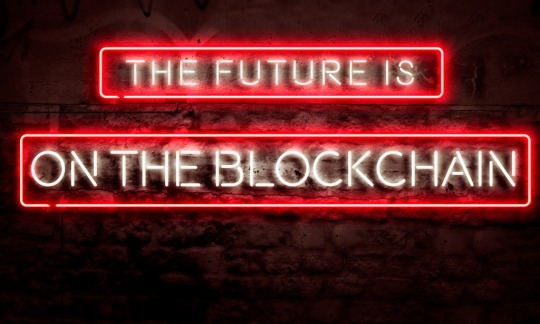
TreasureNFT offers numerous approaches to generate earnings:
Create & Sell Your Own NFTs: If you are an artist or content material creator, you may mint your own creations as NFTs and sell them to a global target market on the market.
Trade Rare Collectibles: For collectors, there are sufficient opportunities to buy low, sell high, and make the most of rare NFTs.
Referral Program Rewards: Invite others to sign up for the TreasureNFT environment the use of your referral link. Earn rewards based on their activity and start building your earnings these days!
Passive Income: Some NFT initiatives provide royalties every time your NFT is resold, that means you can earn habitual profits with out additional attempt.
Staking & Rewards Programs: Lock up funds temporarily to earn attractive returns, making it a terrific manner to grow your portfolio.
How To Get Started with TreasureNFT
Getting started with TreasureNFT is simple and free! Just observe these simple steps:
Click on my referral hyperlink: [Join Now].
Create your account—It’s quick and unfastened to sign up.
Explore the platform: Discover trending collections, mint your first NFT, and more.
Start earning: Trade or refer buddies and earn rewards!
Watch your portfolio grow as you become an lively player on this dynamic ecosystem.
Why Choose TreasureNFT Over Other Platforms?

Unlike other NFT marketplaces, TreasureNFT offers an experience designed for both learners and experienced traders alike. With its smooth onboarding, sturdy incomes opportunities, and focus on accessibility, TreasureNFT would be the move-to platform for NFT fanatics. Plus, it doesn’t require any technical understanding to get started out—just your creativity and willingness to learn.
Conclusion: Join the NFT Revolution with TreasureNFT!
NFTs are here to stay, and structures like TreasureNFT make it easy for all and sundry to participate and gain. Don't miss out in this possibility to liberate financial freedom and creativity. Click the referral hyperlink under and begin your adventure towards achievement these days!
[Click Here To Join Now]
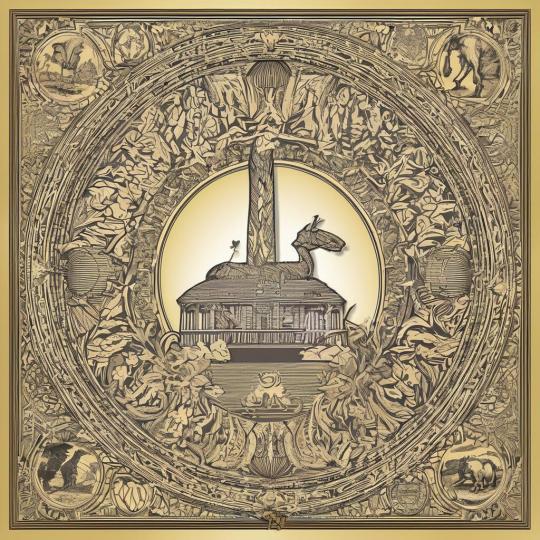
2 notes
·
View notes
Text
How Blockchain & AI Are Powering the Future of Metaverse Development
Introduction: The Tech Duo Redefining Metaverse Development
In today's digital revolution, blockchain and AI are the backbone of metaverse development. These technologies are not just enhancing virtual worlds but also creating secure and immersive ecosystems for businesses and users alike. With blockchain providing transparency and security, and AI delivering intelligent automation, the metaverse is evolving into a more engaging and efficient platform.
What is Metaverse?
The metaverse is a 3D virtual space that blends augmented reality (AR), virtual reality (VR), blockchain, and AI to offer interactive experiences. Users can socialize, conduct business, and explore virtual environments with real-time interactions.
What is Metaverse Marketing?
Metaverse marketing leverages virtual environments to engage audiences. It includes virtual storefronts, interactive brand experiences, and digital advertising through virtual billboards. Brands can host virtual events, product launches, and even customer service interactions to build stronger connections with their audience.
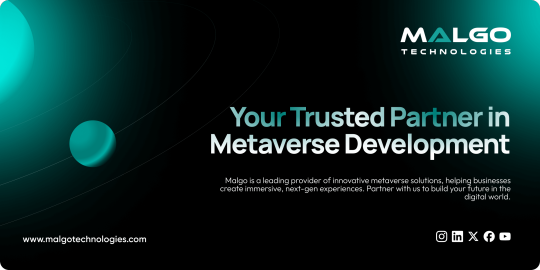
Why Metaverse is Important for Business
The metaverse opens doors for businesses to connect with customers, host virtual events, and offer unique digital experiences. It allows brands to reach global audiences, enhance customer engagement, and create new revenue streams through virtual assets and NFTs.
What Makes Blockchain and AI the Core of Metaverse Growth?
Blockchain Basics: Securing the Metaverse
Secure and transparent transactions: Blockchain records every transaction on a decentralized ledger, ensuring transparency.
Ownership verification through NFTs: Non-fungible tokens (NFTs) allow users to own digital assets securely.
Data protection and privacy: Blockchain encryption protects user data and prevents unauthorized access.
Decentralized control of digital assets: Users have complete control over their virtual assets without intermediaries.
AI’s Magic Touch: Bringing Metaverse Worlds to Life
Realistic virtual environments: AI generates lifelike environments and enhances user interaction.
Intelligent virtual avatars: AI-driven avatars can respond and adapt to user behavior.
Predictive analytics: AI analyzes user data to provide personalized experiences.
Automated content creation: AI tools can design virtual worlds and characters efficiently.
Real-World Wins: Blockchain and AI in Metaverse Projects
Gaming in the Metaverse: Where Blockchain Meets AI
In metaverse gaming platforms, blockchain enables secure in-game asset ownership, while AI enhances character interactions and game environments. This combination allows players to trade digital assets and enjoy lifelike gaming experiences.
Virtual Economies: How Blockchain and AI Create Value
Blockchain-based tokens and NFTs: Allow users to buy, sell, and trade virtual assets.
AI-driven analytics: Helps businesses understand user behavior and optimize virtual economy strategies.
Smart contract-based financial systems: Ensures fair and automated transactions.
Secure data storage: Protects sensitive information on decentralized networks.
Why Blockchain and AI Are the Heart of Metaverse Development Solutions
Metaverse Development Basics: Where Blockchain and AI Shine
Blockchain guarantees data security and asset ownership, while AI automates processes and delivers intelligent interactions. Together, they drive innovation and scalability.
How Blockchain Secures Metaverse Application Development
Decentralized networks for data security: Protects against cyberattacks and data breaches.
Smart contract automation: Enables transparent and efficient transactions.
Ownership verification through NFTs: Ensures authenticity and uniqueness of virtual assets.
Fraud prevention mechanisms: Reduces the risk of unauthorized access and manipulation.
Metaverse Development Services Fueled by AI and Blockchain
What Metaverse Development Services Gain from AI Innovation
AI enhances virtual customer support, generates virtual content, and provides advanced analytics to improve customer satisfaction.
Blockchain’s Role in Metaverse Gaming Platform Development
Blockchain enables secure tokenization, NFT integration, and decentralized asset management. This technology allows players to own in-game assets and trade them across different platforms.
Who’s Building the Future? Metaverse Development Company in Action
Malgo is leading the charge in metaverse development by leveraging blockchain and AI technologies. Their expertise in building secure, scalable, and immersive platforms makes them the ideal choice for businesses aiming to dominate the virtual world.
Picking a Metaverse Development Company That Delivers
Assess blockchain and AI expertise: Check the company’s technical capabilities.
Review customer feedback: Analyze past client reviews and testimonials.
Evaluate customization options: Ensure flexibility in development services.
Ensure data security compliance: Verify adherence to security protocols.
Inside a Metaverse App Development Company: AI and Blockchain at Work
A metaverse development company integrates AI for intelligent features and blockchain for secure asset management. This ensures seamless virtual experiences and secure digital ownership.
The Next Big Leap: Metaverse Development Trends to Watch
AI-Driven Features Shaping Metaverse Development Solutions
AI-powered avatars, predictive analytics, and automated content generation are transforming user experiences in the metaverse. These features enhance user engagement and offer personalized virtual environments.
Blockchain-Powered Ownership in Metaverse Gaming Platform Development
NFT-based ownership of virtual items: Enables secure trading of unique assets.
Smart contract-driven transactions: Ensures transparency and fairness.
Decentralized financial systems: Supports secure and instant payments.
Cross-platform compatibility: Allows seamless asset transfer between platforms.
Final Thoughts: Blockchain, AI, and the Metaverse Development
The fusion of blockchain and AI is shaping the future of metaverse development. Build your virtual empire with advanced Metaverse Development solutions today! With blockchain ensuring security and transparency and AI enhancing user experiences and automation, businesses can create immersive virtual platforms. For businesses aiming to thrive in the virtual world, partnering with Malgo is the perfect choice to build secure, scalable, and immersive metaverse platforms.
1 note
·
View note
Text
SESSION 1. INTRODUCTION TO INFOCOMM TECH LAW IN SINGAPORE
OPTIONAL READING: ICT LAW IN SINGAPORE CHAPTER 1
OPTIONAL REFERENCES: LAW AND TECH IN SINGAPORE CHAPTERS 1-3
A. COURSE DESCRIPTION AND OBJECTIVE
New economies have emerged within the last two decades including digital models of transaction and disruptive innovation. Internet intermediaries generally are taking on a major role as facilitators of commercial and non-commercial transactions online. These include social networking platforms (e.g. Facebook, IG and Twitter), multimedia sharing platforms (e.g. YouTube, Apple Music and Spotify), search engines and news aggregators (e.g. Yahoo, Google), content hosts and storage facilities (e.g. Dropbox) and many others. Content generating platforms such as TikTok have also become popular even as cybersecurity concerns and other misgivings have emerged at the governmental level in some jurisdictions.
In the last few years, the use of Internet of Things (IoT) have become quite common in advanced economies, the latest being wearable devices for the 'Metaverse' and an even more immersive experience in the digital realm. Artificial Intelligence (AI) is also becoming more visible at the workplace and at home, leading to ethical concerns and a slate of guidelines globally to 'govern' its development and deployment. Most recently, interest in generative AI (GAI) emerged from the successful launch of chatGPT and other similar services.
Policies and laws have been adapted to deal with the roles and functions of Internet intermediaries, IoT and AI devices and services, and their potential effects and impact on society. Regulators in every jurisdiction are faced with the challenge to manage the new economy and players, and to balance the interest of multiple parties, in the context of areas of law including intellectual property, data protection, privacy, cloud technology and cyber-security. Different types of safe harbour laws and exceptions have emerged to protect these intermediaries and putting in place special obligations; while some forms of protections have been augmented to protect the interests of other parties including content providers and creators as well as society at large. Students taking this course will examine the legal issues and solutions arising from transactions through the creation and use of digital information, goods and services ('info') as well as the use of non-physical channels of communication and delivery ('comm').
The technological developments from Web 1.0 to 2.0 and the future of Web 3.0 with its impact on human interaction and B2B/B2C commerce as well as e-governance will be examined in the context of civil and criminal law, both in relation to the relevance of old laws and the enactment of new ones. In particular, this course examines the laws specifically arising from and relating to electronic transactions and interaction and their objectives and impact on the individual vis-à-vis other parties. Students will be taken through the policy considerations and general Singapore legislations and judicial decisions on the subject with comparisons and reference to foreign legislation where relevant.
In particular, electronic commerce and other forms of transactions will be studied with reference to the Electronic Transactions Act (2010) and the Singapore domain name framework supporting access to websites; personal data privacy and protection will be studied with reference to the Personal Data Protection Act of 2012 and the Spam Control Act; the challenges and changes to tort law to deal with online tortious conduct will be analysed (e.g. cyber-harassment under the Protection from Harassment Act (2014) and online defamation in the context of online communication); the rights and liabilities relating to personal uses of Internet content and user-generated content will be considered with reference to the Copyright Act (2021); computer security and crimes will be studied with reference to the Computer Misuse Act (2017) and the Cybersecurity Act (2018); and last, but not least, Internet regulation under the Broadcasting Act and its regulations as well as the Protection from Online Falsehoods and Manipulation Act (2019), the Foreign Interference (Countermeasures) Act (2021) and the Online Criminal Harms Bill (2021) will be critically evaluated.
You will note from the above paragraph that there have been an acceleration in the enactment of ICT laws and amendments in recent years, which shows the renewed focus of the government and policy-makers when it comes to the digital economy and society (as we move towards a SMART Nation). This is happening not online in Singapore, but abroad as well. In such an inter-connected work with porous jurisdiction when it comes to human interaction and commercial transactions, we have to be aware of global trends and, in some cases, the laws of other jurisdictions as well. When it is relevant, foreign laws will also be canvassed as a comparison or to contrast the approach to a specific problem. Projects are a good way to approach in greater depth.
B. CLASS PREPARATION FOR SESSION 1
In preparation for this session, use the online and library resources that you are familiar with to answer the following questions in the Singapore context (and for foreign/exchange students, in the context of your respective countries):
What are the relevant agencies and their policies on ICT?
What are the areas of law that are most impacted by ICT?
What is the government's position on Artificial Intelligence?
What are the latest legal developments on this field?
Also, critically consider the analysis and recommendations made in the report on Applying Ethical Principles for Artificial Intelligence in Regulatory Reform, SAL Law Reform Committee, July 2020. Evaluate it against the second version of the Model AI Governance Framework from the IMDA. Also, look at the Discussion Paper on GAI released on 6 June 2023. Take note of this even as we embark on the ‘tour’ of disparate ICT topics from Session 2 onwards, and the implications for each of those areas of law that will be covered in class.
C. ASSESSMENT METHOD AND GRADING DISTRIBUTION
Class Participation 10% (individually assessed)
Group Project 30% (group assessed)
Written Exam 60% (2 hour open book examination)
This course will be fully conducted in the classroom setting. Project groups will be formed by week 2, projects will be assigned from week 3, and presentations will begin from week 4 with written assignments to be due for submission a weeks after presentation. Further details and instructions will be given after the groups are formed, but before the first project assignment.
D. RECOMMENDED TEXTBOOK AND READINGS
The main textbook is: Warren B. Chik & Saw Cheng Lim, Information and Communications Technology Law in Singapore (Academy Publishing, Law Practice Series, July 2020). You can purchase the book (both physical and electronic copies) from the Singapore Academy of Law Publishing (ask for the student discount). If you prefer, there are copies available in the reserves section of the Law Library that you can use. The other useful reference will be: Chesterman, Goh & Phang, Law and Technology in Singapore (Academy Publishing, Law Practice Series, September 2021).
Due to the rapid pace of development in the law in some areas of analysis, students will also be given instructions and pre-assigned readings via this blog one week before each lesson. Students need only refer to the SMU eLearn website for administrative information such as the Project Schedule and the Grade Book as well as to share project papers and presentation materials. Students will be expected to analyse legislative provisions and/or cases that are indicated as required reading for each week.
Free access to the local legislation and subsidiary legislation may be found at the Singapore Statutes Online website at: https://sso.agc.gov.sg.
Local cases are accessible through the Legal Workbench in Lawnet. The hyperlink can be found under the Law Databases column on the SMU Library’s Law Research Navigator at: http://researchguides.smu.edu.sg/LAW.
Other online secondary legal materials on Singapore law that you may find useful include Singapore Law Watch (http://www.singaporelawwatch.sg) and Singapore Law SG (https://www.singaporelawblog.sg).
There are also other secondary resources made available from the SMU Library when doing research for your projects such as the many other digital databases available from the LRN (e.g. Lexis, Westlaw and Hein online that are all available under the Law Databases column) and the books and periodicals that are available on the library shelves.
5 notes
·
View notes
Text
Is blogging still relevant in the age of Tik Tok and Instagram?
THE DIFFERENCE BETWEEN BLOGS AND SOCIAL MEDIA PLATFORMS
To start off this post, I feel it is relevant to first explain the main difference between blogs like Tumblr and social media platforms like Tik Tok and Instagram. Blogs are mediums where an individual or association will post detailed written content in their field of expertise (Walker Rettberg 2013). On the other hand, social media platforms focus on creating short and visually-pleasing content to attract people’s attention (Davis 2016). Therefore, I conclude that blogging is still relevant as people rely on blogs to receive in-depth knowledge and analysis on specific topics while social media platforms cater to creating interest and providing general knowledge in a specific topic.
BLOG FORMAT
One key strength of Tumblr is its ability to allow content creators to share their deep understanding in fields of their expertise. The reason for this is that Tumblr does not have a word limit on their posts unlike other social media platforms (Rahmanita et al. 2018). This then allows content creators to blog detailed information and analysis on their chosen topic, along with providing sources and evidence to back up their stance. According to Davis (2016), Jason Kottke is one such blogger who is a web designer and he shares his insights on cultural sides of web development, design and new technology; sometimes including a personal story on it as well. Readers in turn would have a better grasp and understanding of the topic as the blog provides comprehensive information.
BLOG CREDIBILITY
Furthermore, blogs tend to have higher credibility when compared to social media platforms like Tik Tok. During the Covid-19 pandemic, there were multiple videos on Tik Tok spreading misinformation that Bill Gates, the former CEO of Microsoft had a hand in causing the virus outbreak (Chmielewski 2020). This caused major confusion in a time of hardship and unrest. However, credible blogs were able to help mediate the confusion and instead provide accurate information to the people. One such blog is Banner Health where health tips and expert advice was given. One such example was an article writing about the symptoms of long Covid and its effects on humans (Olsson 2022). Blogs like this were crucial during the period of rampant misinformation on Covid-19 because they helped to contribute accurate information that was backed by research and cited sources to the people. By doing this, bloggers were able to become reliable voices on the Covid-19 topic and create a safe space for people to learn more about the virus, in turn allowing them to better protect themselves.
BLOG AS A COMPLIMENTARY TOOL
Besides that, blogs can work as a complementary tool to social media platforms like Tik Tok and Instagram. Content creators typically use multiple different platforms in order to reach a wider and more diverse audience. Similarly, bloggers could use social media platforms like Tik Tok to promote their blog content and in turn draw in more people to their main site of content creation. The reason this is a plausible model is because social media platforms tend to reach wider audiences when compared to blogs that specify in certain target audiences (ONPASSIVE 2023). Brian Solis is one such blogger who follows this example. On his blog, Solis himself has written many articles on disruptive technology, one of them touching on how companies can use the metaverse, a new web to their advantage (Solis 2022). Solis also further uses Instagram to share snippets of his thoughts on the topic, allowing him to grab people’s attention and bringing more people to his blog is they are interested in the topic.
MONETIZATION OF BLOGS
Blogs also have the potential to become monetization platforms, sometimes being more effective than social media platforms. One reason is that blogs have more options on ways to become monetized. Some of the many methods are brand sponsorship, affiliate marketing, showing advertisements and email marketing. Brand sponsorships involve brands paying bloggers to share their opinions and reviews on the brand products (Saeed 2023). They can be especially effective if both the brand and blog share similar interests as they target the same audience. According to Saeed (2023), affiliate marketing differs as it works on a commission basis where the blogger receives money when an audience member buys a brand product through the blogger’s special link or code. Saeed (2023) also mentions that blogs may show advertisements that are related to the blog’s content and revenue can be generated through ad clicks. Moreover, Saeed also states that email marketing can be another great way to communicate with the audience and bring them back to the blog (2023).
To conclude, although social media platforms are quickly becoming the more popular option to audiences, blogs still have their unique strengths that allows them to remain relevant in this current age.
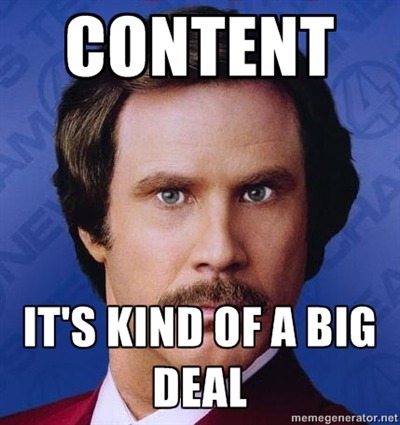
REFERENCES
Chmielewski, D 2020, ‘TikTok used to spread misinformation about the coronavirus’, Forbes, 28 January, viewed 26 September 2023, <https://www.forbes.com/sites/dawnchmielewski/2020/01/28/tiktok-used-to-spread-misinformation-about-the-coronavirus/?sh=3465bfdd16d6>.
Costanza, T, ‘[Blogger Meme 3]’, in Silicon Republic 2015, 10 blogger memes look at the funny side of the career, Silicon Republic, viewed 28 September 2023, <https://www.siliconrepublic.com/careers/10-blogger-memes-look-at-the-funny-side-of-the-career>.
Davis, JL 2016, ‘Social Media’, The International Encyclopedia of Political Communication, January, viewed 25 September 2023, <https://www.researchgate.net/publication/314581845_Social_Media#:~:text=Social%20media%20are%20defined%20as,sharing%20of%20user%2Dgenerated%20content.>.
Olsson, R 2022, ‘Long COVID: 5 big questions answered about Post-COVID Syndrome’, Banner Health, 13 April, viewed 26 September 2023, <https://www.bannerhealth.com/healthcareblog/better-me/long-covid-questions-answered-about-post-covid-syndrome>.
ONPASSIVE 2023, ‘What is the difference between blogging and social media?’, ONPASSIVE, 27 March, viewed 27 September 2023, <https://onpassive.com/blog/what-is-the-difference-between-blogging-and-social-media/>.
Rahmanita, M & Cahyono, BY 2018, ‘The effect of using Tumblr on the EFL students’ ability in writing argumentative essays’, Journal of Language Teaching and Research, September, viewed 26 September 2023, <https://www.researchgate.net/publication/327378337_The_Effect_of_Using_Tumblr_on_the_EFL_Students'_Ability_in_Writing_Argumentative_Essays>.
Saeed, M 2023, ‘How to monetize content and boost your audience as a blogger’, Forbes, 21 August, viewed 28 September 2023, <https://www.forbes.com/sites/forbesagencycouncil/2023/08/21/how-to-monetize-content-and-boost-your-audience-as-a-blogger/?sh=3a2225d73f1b>.
Solis, B 2022, ‘Making the business case for the metaverse: how companies can create value in the next web’, Brian Solis, 31 October, viewed 27 September 2023, <https://www.briansolis.com/2022/10/making-the-business-case-for-the-metaverse-how-companies-can-create-value-in-the-next-web/>.
Walker Rettberg, J 2013, 'What is a Blog' ch1; and 'Blogging Communities and Networks', ch 3 in Blogging. (2nd edn)
4 notes
·
View notes
Text
Okay so this is gonna be a big rant. I didn't check my sources, I'm going to say things that are wrong. You're going to have to live with it.
Around the time of windows 8 Microsoft tried to reinvent itself. It was tired of being the stuffy, skeuomorphic machine you were assigned at work. They wanted to be cool. Part of this vision was a complete redesign of the interface
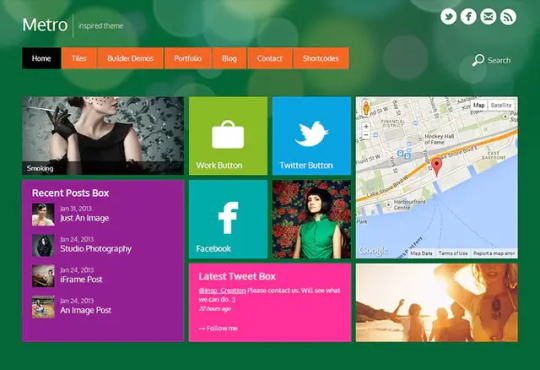
And I don't know, call me crazy, I think this visual design fucks. I mean look at this. It's simplistic but gorgeous. The rest of the industry was running away from skeuomorphism towards simplicity via rounded bulbous corners. This was distinct, it was colorful, it had contrast, it was sharp. It literally looked like a bunch of windows in a pane.
At the time, Microsoft was also launching a windows phone (much to late to make a difference. They missed the boat but they didn't know it yet) and were designing a new Xbox that would have architecture near identical to that of a PC. The idea was that they were expanding beyond just stuffy PCs, there were a lot of new product categories and they wanted a universal version of windows that could handle all of them. You could build a "Universal Windows Platform" app that would run on any version of windows on any device. This was achieved using the C# virtual machine that us CS people tentatively affectionately call "Microsoft Java".
The future that Microsoft envisioned would be that there would be a new walled garden of software that you would run on all your pretty new windows devices. They would all share and sync and be perfect and pretty, and the same app on your phone could be played on your xbox, pc, and holy shit AR GOGGLES?

Yeah these fucking things. Microsoft bet big on the idea we'd like to start doing shit with holograms. They made this cool-ass device that used projectors to shine shit into your eye so you could see holograms and poke them and move them about. These were Windows devices that ran actual full-on windows, but that meant that Windows' identity had to grow to accommodate them. All the UIs had to work in a world where you'd see them on a touch screen OR as a hologram. All of the first party software had to have that in mind.
MS paint? Nah that shit's ancient. We got PAINT 3D and it's the most dogshit thing you've ever used
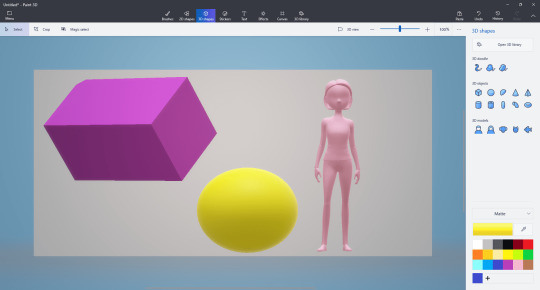
All the sloppy jank of MS paint but now you can put horrible fucking 3d models in it. I'm holding back my full Paint 3d thoughts for a later post that's still being worked on in the drafts, but here's a sneak preview.
Paint 3d allows you to dip into a catalogue of 3d models and plop them into your regular MS paint canvas. There's still no layers, no vector support, but hey at least you can add transparent backgrounds. Paint 3d let you export your horrible janky creations both as a regular png/jpg but also as a 3d model.
that's your short answer. They added that 3d models folder because of paint 3d. If you want to leave now you can... but this post keeps going as you can see.
The idea would be that as more of our tech moved to AR and VR you would be acquiring 3d models at a similar rate that you do other file times, so it made sense to have a built in folder. Maybe you work at one of those offices in an microsoft ad where I guess people just email each other .fbx flower pots for some fucking reason? Maybe you're downloading them from the metaverse (we weren't calling it that back then).
Your friend using a hololense would make a 3d model and then send it to you, you'd add some shit to it in paint 3d using its kafkaesque interface, then send it back. Wow. The future is so much fun.

You could even stick your 3d models in your very own VR start menu. Yeah. To go along with the AR goggles they released some dogshit (well they were good for the time and also cheap compared to the competition) VR goggles. These things ran on the SAME uwp platform as everything else, so theoretically I could make some abomination in paint 3d and then send it to my dad who works at the flower pot factory or some shit and he could put it on his virtual desk in his virtual cliff house start menu where he would virtually alt tab between a hovering window of Microsoft word and some freaky VR porn that his boss couldn't catch him watching because it was all in the headset.
That didn't fucking happen. We don't do that. And it's not just because it was a terrible idea but also because Microsoft wasn't committed to the bit.
See this house of cards came crashing down for a lot of reasons. The first one being that it wasn't backwards compatible. This cool 3d virtual, cross-device future wasn't with the win32 api, but the new UWP api. Devs had to remake their software in a less performant programming language and format just so it would run on all windows devices... but windows for PC still ran the win32 style apps that already worked. So you were expecting devs to port their windows app to... to windows... so it could run on windows... even though it was already running on windows. Oh yeah, let's just rewrite our whole accounting software stack so that bill can use it on his windows phone because phones are definitely for doing accounting and not playing fucking candy crush.
xkcd 927

UWP added the functionality of "It works on xboxes, vr googles, windows phones, AND computers but just a little bit worse than the other ones and you have to remake it from scratch". It was just one more competing standard, and the use case of cross platform didn't really help that much.
The windows phone died out early on because it was too late and it couldn't cross the app gap (even though it's UI totally fucked and you play a halo twin stick shooter on it). The hololense died because it cost them ONE THOUSAND dollars just to build the screen assembly for one eye, you needed two of those + an onboard computer to run AR + a fuckload of cameras + proffit. No one was ever going to spend that kinda of cash just so they could pinch and zoom semi transparent holograms in a tiny 40 degree feild of vision in for two and a half hours because yeah the battery life was shit too. Developers never made software for it because there would never be any install base because something that superfluous can't ever be that expensive while we're all getting poorer.
Now, the VR headsets on the other hand, they kinda sucked... but they were cheap and they were competent. With a bit of elbow grease you could make them be just as good as the pretty boys, and they were the first to market with inside out tracking which was legitimately freeing back in 2018. Microsoft could have integrated it with the Xbox to compete with PSV but they just didn't for no fucking reason even though they both ran UWP apps and were on the same appstore and used all the same ports and the Xbox was just about powerful enough to play some games in VR. Yeah they just didn't commit to the bit and abandoned their VR headset line because it didn't instantly become a monopoly despite them putting very little effort into it.
So windows phone died, windows VR died, hololense died, and now regular windows 10 is full of the corpses of this cross platform vision. We have the 3d objects folder even though nothing really uses it anymore. Windows 10 never fully upgraded to the metro theme. It's like... half metro but some settings require you go to the old XP control panel. Some windows are in metro style but then when you right click on them there's just a standard win32 dialogue box that's ugly and white. It's been that way since 2015 and rather than finishing windows 10 and making it pretty they stuffed it full of bullshit and ads and then said "FUCK IT, WINDOWS 11"
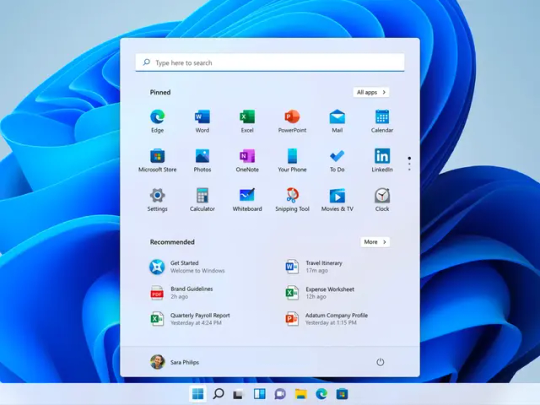
And windows 11's whole thing is being ugly and simplistic and rounded corners and wasted space and designed for a touch screen because even though the windows phone died at least the 2 in one windows tablet market was doing okay.
Windows is a collection of good ideas, followed by a bag fumble, followed by an admission of defeat and a retreat to the familiar.
And somewhere along the way we got a new folder for 3d objects, and if you really want you can use paint 3d to make this shit I guess:
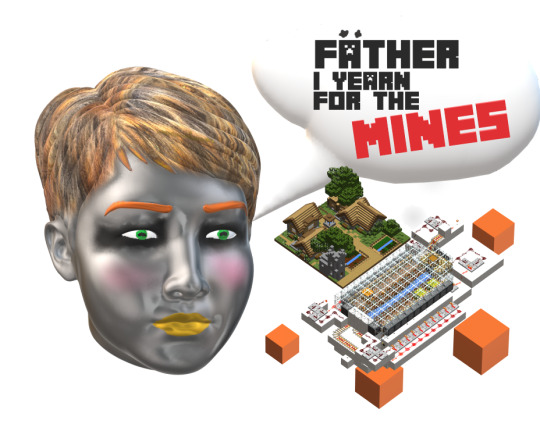
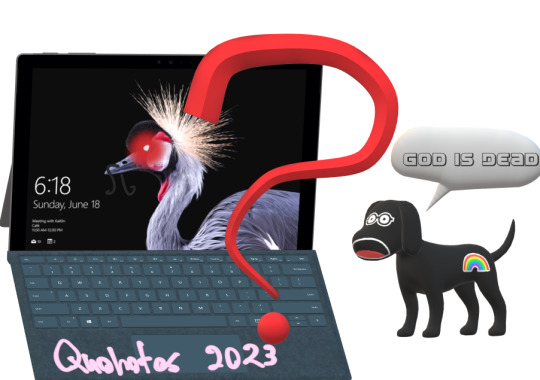


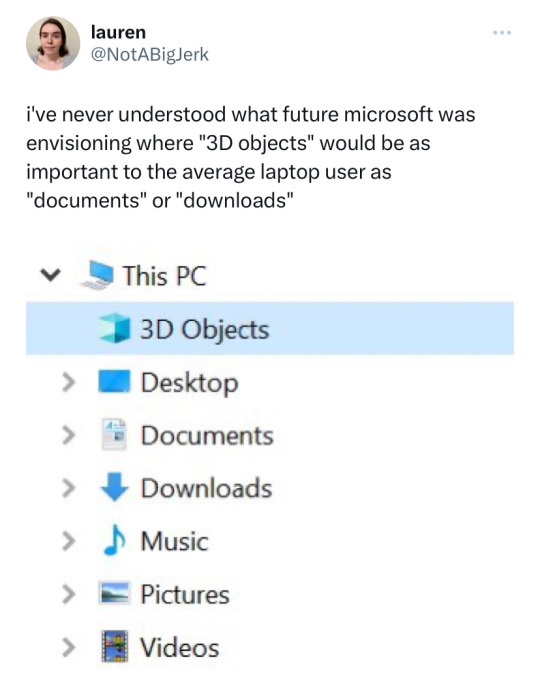
#Quohotos' unhinged rants that no one asked for#Microsoft#Windows#paint3d#paint 3d#rant#UX design#UX#interface design#graphic design
109K notes
·
View notes
Text
In today’s rapidly evolving digital landscape, the concept of the metaverse has gained significant traction. As businesses and individuals seek to create immersive experiences that bridge the gap between the physical and virtual worlds, companies like Simulanis Solutions have emerged as leaders in this innovative space. As a premier Metaverse Development Company, Simulanis is dedicated to pushing the boundaries of what’s possible in digital interaction
#Metaverse Development Services#Metaverse Solutions Provider#Metaverse Platform Development#Custom Metaverse Development#Metaverse Game Development#Metaverse App Development#3D Metaverse Development#Blockchain Metaverse Development#Metaverse Experience Design#Metaverse VR/AR Integration#Virtual Worlds Development#Metaverse Virtual Reality Development#NFT Integration in Metaverse#Interactive Metaverse Solutions#Metaverse for Business Solutions#Metaverse Environment Creation#Metaverse Real Estate Development#Next-gen Metaverse Development#Metaverse Integration Services#Metaverse Customization Services
0 notes
Text
Crypto Marketing for NFT Projects: Best Practices and Case Studies
As the NFT ecosystem continues to evolve beyond profile pictures and speculative trading, one factor remains constant — the need for strong, strategic marketing. In a landscape flooded with new drops, art collections, metaverse assets, and utility-based NFTs, even the most innovative project will struggle without a clear marketing strategy. For NFT creators, marketers, and founders, the key to success lies in blending crypto-native marketing tactics with creative storytelling, community-first engagement, and data-driven distribution. This blog explores the best practices for NFT marketing and breaks down real-world case studies to offer practical, actionable insights.
Why NFT Marketing Is Different from Traditional Digital Marketing
NFT marketing isn't just about reaching users — it's about building belief in the value of digital ownership. Unlike traditional products, NFTs operate within decentralized ecosystems and derive value from scarcity, utility, community perception, and social proof. As a result, NFT marketing relies on cultural momentum and psychological engagement rather than conventional conversion funnels.
Additionally, NFT audiences are often highly active on niche platforms like Discord, Twitter (X), and Telegram. These communities thrive on real-time interaction, transparency, and involvement in decision-making. A Web2-style top-down approach to marketing falls flat in such environments. Instead, NFT marketing thrives on co-creation, feedback loops, and native participation.
Successful campaigns also require a solid grasp of tokenomics, gas fees, wallet integration, and drop mechanics. Marketers in this space must understand the technical layers that support NFT utility, gamification, and long-term engagement — otherwise, even the best creative concept may lack traction among crypto-native users.
Building the Foundation: Community and Storytelling
Every top-tier NFT project begins with a story that resonates. Whether it’s an origin myth, a roadmap vision, or the artist’s journey, narrative provides the emotional and cultural scaffolding that supports community growth. Without a cohesive story, NFT collections feel disposable — just another JPEG in the sea.
But storytelling isn’t enough on its own. It must be supported by a strategy to build and nurture community. Most successful NFT projects launch a Discord server months before the mint, using this time to attract organic members, host sneak peeks, and onboard new users into the culture. Transparency, responsiveness, and shared milestones are vital. When users feel like early contributors rather than spectators, they become brand evangelists — the most powerful marketing asset in crypto.
Moreover, this approach also builds scarcity and demand. Limited whitelist spots, active moderation, and engaging events like AMAs or lore-building sessions increase anticipation. The key is to avoid hype for hype’s sake and instead focus on authentic engagement.
Best Practice 1: Twitter/X Growth with Value-Driven Content
For NFT projects, Twitter (X) is more than a social media channel — it's a discovery engine. Most NFT traders, collectors, and influencers spend significant time here, making it an essential channel for brand awareness and audience growth.
Instead of broadcasting announcements, projects that thrive on Twitter share insightful threads, visual teasers, community shoutouts, and collaborations. Successful accounts often comment on trends, engage with other NFT projects, and participate in cultural discourse. The tone should be accessible but crypto-native, balancing meme culture with mission clarity.
Some projects use Twitter to run “engagement farming” campaigns, such as giveaways, retweet-to-win contests, and whitelist competitions. While these tactics can inflate numbers temporarily, the best practice is to combine short-term attention with long-term retention through consistent content, value-sharing, and behind-the-scenes access.
Best Practice 2: Discord Activation and Gamified Onboarding
Discord has become the central hub for NFT communities. The platform allows for granular control over roles, access, and content delivery — making it ideal for managing whitelist entries, announcements, support, and interactive experiences.
Effective Discord marketing goes far beyond simply opening a server. Projects that stand out implement structured onboarding journeys, gamified participation, and incentives for contributing meaningfully. Role hierarchies, daily engagement tasks, fan art challenges, and lore-based puzzles are just a few ways to activate early users.
Bots can help automate tasks like level-ups, whitelisting, or drop countdowns, but moderation must remain human-centered. Moderators, community managers, and founders should remain visible, accessible, and open to feedback. In many cases, the tone of a project’s Discord server shapes public perception more than the NFT art itself.
Best Practice 3: Strategic Collaborations with Other Web3 Projects
One of the most effective growth levers in NFT marketing is collaboration with other successful projects. This doesn’t just increase reach — it builds trust. When a well-known project or artist endorses or partners with a newer NFT collection, it lends social proof and credibility.
Strategic collaborations can take many forms. Joint giveaways, crossover collectibles, Twitter Spaces, co-branded artwork, and even shared token utility all help bring overlapping communities together. The key is alignment — values, art style, audience, and utility should make sense together.
Projects should avoid collaborations based solely on follower counts or hype. Instead, meaningful partnerships that offer users a new kind of value — like exclusive access or unique holder perks — have the most lasting impact.
Best Practice 4: Influencer Marketing and KOL Endorsements
Key opinion leaders (KOLs) in the NFT space play a huge role in early discovery. But the days of paid shoutouts with zero context are fading. Influencer marketing now works best when it feels native and organic — ideally involving the influencer as a true participant in the project’s journey.
The most impactful KOLs are often those who mint early, provide honest feedback, and share their experience with their followers. Building these relationships requires effort and transparency. Cold outreach rarely works unless paired with genuine interest and a strong value proposition.
Many NFT marketers now involve influencers in the design or roadmap process, turning them into partial stakeholders. Whether it’s through honorary NFTs, exclusive drops, or even revenue sharing, influencer partnerships work best when the influencer’s community feels like they’re part of the experience — not just an audience being marketed to.
Case Study 1: Pudgy Penguins and Community-Driven Brand Expansion
Pudgy Penguins is a standout example of an NFT brand that successfully moved beyond its initial collection to become a recognizable Web3 IP. After an early rough patch and leadership change, the project refocused its marketing efforts on storytelling, community empowerment, and merchandise expansion.
The marketing strategy combined physical toys, viral memes, and real-life partnerships, making the brand approachable and meme-friendly even outside of Web3. Their Twitter content became iconic for its feel-good messaging and relatable humor, while the team built out commercial rights frameworks and launched a Shopify-native NFT tool.
The success of Pudgy Penguins came from balancing crypto-native engagement with Web2 brand expansion. Their NFTs now act as keys to broader experiences, proving that community-powered IP can scale — with the right marketing vision.
Case Study 2: Azuki and the Power of Visual Identity
Azuki leveraged high-quality anime aesthetics and a strong narrative identity to carve a niche in the NFT space. Their mint sold out quickly due to a well-timed campaign that teased lore, involved early influencers, and focused heavily on brand consistency.
One key element of Azuki’s success was its visual storytelling. The brand’s design language remained consistent across social media, website, and even physical activations. Their "Garden" concept created a mystique around the project, which was reinforced through merch drops, secret events, and token-gated experiences.
Azuki’s marketing efforts were tightly aligned with their community’s identity. They understood that their collectors weren’t just buying JPEGs — they were joining a cultural movement. This insight enabled them to build long-term loyalty and real-world brand equity.
Case Study 3: NBA Top Shot and Mainstream Onboarding
NBA Top Shot represents a case where an NFT project successfully onboarded thousands of users with no prior crypto experience. Built by Dapper Labs, the platform made collecting basketball highlights as NFTs feel familiar and fun for sports fans.
The marketing approach emphasized user experience over blockchain jargon. A slick interface, easy sign-up process, and fiat payment options helped break down barriers. Top Shot also partnered with the NBA and promoted the project across traditional sports media channels, expanding the NFT narrative to a mainstream audience.
What set NBA Top Shot apart was its ability to straddle both Web2 and Web3 worlds. While its technical foundation was blockchain-based, the storytelling was driven by nostalgia, fandom, and real-world sports culture. Its marketing team focused on emotion over technology — and the results showed.
Key Takeaways for NFT Marketers
As NFT projects evolve, so must the marketing strategies behind them. Community remains king, but the approach to building and engaging that community has grown more nuanced. Success depends on blending visual storytelling, real-time communication, strategic partnerships, and platform-native content.
The most effective NFT marketing isn’t just about filling a whitelist — it’s about creating a brand experience that people want to be part of. Whether it’s through memes, art, gamification, or utility, the emotional connection is what drives holders to stick around.
Case studies from projects like Pudgy Penguins, Azuki, and NBA Top Shot prove that NFT marketing can achieve both grassroots credibility and global reach. But none of it happens by accident. It takes planning, patience, and a deep understanding of what your community values — both culturally and technologically.
0 notes
Text
3D Animation Market Trends: Virtual Production and Real-Time Rendering

The 3D animation market is rapidly expanding, revolutionizing industries like film, gaming, advertising, architecture, engineering, and healthcare. With advanced technologies such as real-time rendering, motion capture, AI, and AR/VR, 3D animation is increasingly becoming a vital component of digital content creation and immersive experiences.
The growth of streaming platforms, interactive gaming, and metaverse ecosystems has significantly increased the demand for high-quality 3D animation. Additionally, the rising adoption of 3D visualization in product design, marketing, and e-learning has expanded the market beyond entertainment.
Market Overview
Key factors driving market growth include:
Increasing demand for realistic visual effects (VFX) in films and gaming.
Adoption of virtual production technologies in the entertainment sector.
Growing use of 3D animation in marketing, product visualization, and simulations.
Expansion of AR/VR-based applications across industries.
The market’s evolution is strongly influenced by cloud-based 3D animation software, enabling remote collaboration and faster rendering capabilities.
Click here to download a sample report
Key Market Drivers
1. Rising Demand for Realistic and Immersive Content The growing expectation for cinematic-quality visuals in films, commercials, and games is fueling the use of 3D animation.
2. Growth of the Gaming Industry The gaming sector, particularly with AAA titles and esports, heavily relies on advanced 3D models and VFX.
3. Integration of AR/VR and Metaverse 3D animation is the backbone of immersive VR experiences, virtual avatars, and interactive digital worlds.
4. Technological Innovations in Software and Tools 3D animation software like Autodesk Maya, Blender, Unreal Engine, and Cinema 4D have advanced capabilities for real-time rendering.
5. Outsourcing and Cost Efficiency Countries such as India, South Korea, and the Philippines have become major outsourcing hubs for animation projects.
Market Segmentation
By Technique:
3D Modeling
Motion Graphics
Rendering
Visual Effects (VFX)
Others (Simulation, Rigging)
By Component:
Software (Autodesk, Blender, Adobe Animate, Houdini)
Hardware (Workstations, Rendering Systems)
Services (Production, Post-Production, Outsourcing)
By Application:
Film & Television
Gaming
Architecture & Interior Visualization
Advertising & Marketing
Healthcare & Medical Simulation
eLearning & Edutainment
Others (Automotive, Aerospace)
By Region:
North America
Europe
Asia-Pacific
Latin America
Middle East & Africa
Regional Insights
North America The largest market due to Hollywood studios, gaming giants, and technology innovation.
Europe Well-established animation and VFX hubs in France, the UK, and Germany, with a focus on independent content and creative productions.
Asia-Pacific Fastest-growing market with outsourcing hubs in India, South Korea, Japan (anime dominance), and China’s booming animation sector.
Middle East & Africa Rising interest in animated advertising and educational content.
Latin America Emerging market with growing digital media production and outsourced services.
Competitive Landscape
The 3D animation market is highly competitive, with global studios, software developers, and production companies driving innovation.
Key Companies Include:
Autodesk Inc.
Adobe Systems Inc.
Pixar Animation Studios (Disney)
DreamWorks Animation (NBCUniversal)
Blender Foundation
Maxon (Cinema 4D)
SideFX (Houdini)
Technicolor Animation Productions
NVIDIA Corporation
Epic Games (Unreal Engine)
Strategic Initiatives:
Collaboration between software companies and studios for real-time rendering.
Increased investment in cloud rendering farms and AI-based animation tools.
Expansion of services for metaverse-ready and immersive content creation.
Technological & Product Trends
Real-Time Rendering Game engines like Unreal Engine and Unity are transforming animation pipelines for films and interactive media.
AI in 3D Animation AI tools automate rigging, facial motion capture, and lip-syncing, reducing production time.
Cloud-Based 3D Animation Enables remote collaboration and faster rendering via cloud computing and virtual workstations.
Metaverse-Ready Assets Demand for 3D avatars, interactive digital assets, and virtual environments is surging.
Challenges and Restraints
High Production Costs: Advanced 3D animation requires expensive software, hardware, and skilled professionals.
Time-Consuming Processes: Rendering and visual effects can delay projects.
Copyright and Piracy Issues: Intellectual property concerns remain a challenge.
Talent Shortages: Skilled animators and technical artists are in high demand.
Future Outlook (2024–2032)
The 3D animation market is expected to grow significantly due to:
Increasing use of 3D content in marketing, VR training, and simulation.
Metaverse and digital twin technology fueling new opportunities.
AI-driven animation workflows enhancing productivity.
Growth of e-learning platforms and healthcare visualization.
By 2032, real-time 3D animation integrated with AR/VR will dominate industries ranging from entertainment to industrial design.
Conclusion
The global 3D animation market is at the forefront of digital storytelling and immersive content creation. Companies that invest in cloud-based pipelines, AI, and interactive technologies will thrive in this dynamic and rapidly evolving market.
0 notes
Text
NFT Development in Austin: How a Blockchain Development Company in Austin Can Help You Succeed
Austin’s Innovation Scene Meets NFT and Blockchain Technology
Austin, Texas—known as Silicon Hills—is booming with tech innovation, creative startups, and digital-first businesses. As industries evolve, one technology stands out for its transformative impact: blockchain. From finance to entertainment, blockchain is redefining how data, assets, and interactions are secured and monetized.
Among its most exciting innovations? NFTs (Non-Fungible Tokens). These unique digital assets are not just for art collectors—they’re disrupting industries like gaming, real estate, media, and beyond.
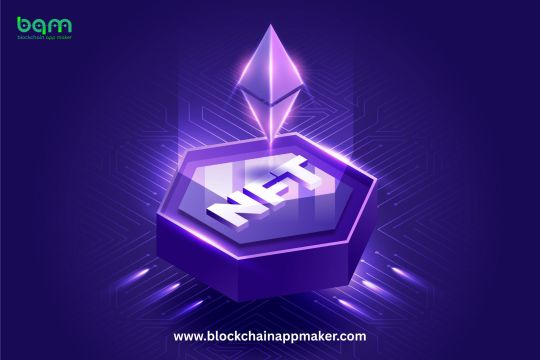
Why NFTs Are a Game Changer for Businesses
As a forward-thinking blockchain development company in Austin, we’ve seen firsthand how NFTs are revolutionizing digital engagement and value creation across industries. Non-fungible tokens empower businesses to create unique digital assets that are transparent, verifiable, and tradable—enabling entirely new models of ownership and monetization.
Businesses today are leveraging NFTs to:
Authenticate and track digital or physical products
Offer exclusive membership benefits or gated content
Create immersive customer experiences through gamification
Monetize original content without intermediaries
Build loyalty programs powered by token ownership
Whether you're in entertainment, e-commerce, education, or real estate, NFTs open the door to innovation and deeper customer connection.
What We Offer as a Blockchain Development Company in Austin
Blockchain App Maker provides a comprehensive suite of blockchain development services, including:
Custom Blockchain Solutions
We build private, public, and hybrid blockchain networks for industries like healthcare, fintech, logistics, and entertainment.
NFT Integration for Businesses
Add NFTs to your business model—be it for digital products, access passes, or collectibles.
NFT Marketplace Development
Launch your own white-label NFT platform to trade digital assets with built-in smart contracts and royalty management.
Wallet Development & Integration
We create secure, multi-chain wallets compatible with Ethereum, Polygon, Solana, and more.
Smart Contract Development
Our developers write secure, gas-efficient smart contracts for NFT minting, royalties, and transfers.
Why Choose Blockchain App Maker in Austin
As a leading blockchain development company in Austin, our mission is to help you succeed in the Web3 world. Here's how we do it:
Local Team, Global Vision: Based in Austin, we’re deeply embedded in the local innovation scene, with the resources to scale globally.
NFT Pioneers: We’ve worked with creators, brands, and tech firms to build impactful NFT solutions.
End-to-End Expertise: From blockchain consulting to deployment and maintenance, we cover it all.
Security & Compliance: Our solutions follow top industry standards for blockchain security, privacy, and regulatory readiness.
Use Cases: Real-World NFT Solutions We Can Build
Explore how NFT-powered blockchain platforms can serve different sectors in Austin:
Music & Entertainment: Tokenize albums, ticketing, and fan experiences
Healthcare: Use NFTs to manage and verify patient data securely
Retail: Introduce NFT loyalty programs and branded collectibles
Education: Create NFTs as digital certificates and credentials
Real Estate: Tokenize property deeds, fractional ownership, and digital twins
How Austin Startups Can Lead with NFT Technology
With its tech-forward mindset, Austin is the perfect launchpad for NFT-based innovation. By partnering with a trusted blockchain development company in Austin, you gain access to the tools, talent, and tech infrastructure needed to turn bold ideas into reality.
Whether you're looking to tokenize your product offerings, build a decentralized app, or create a metaverse experience, we’ll help you design, develop, and scale with confidence.
Future-Proof Your Business with NFT-Powered Blockchain Solutions
NFTs are more than digital collectibles—they are a bridge to the next era of digital transformation. With Austin quickly becoming a national leader in Web3 adoption, now is the perfect time to explore what NFTs can do for your business.
At Blockchain App Maker, we help you tap into the full potential of NFTs and decentralized technology through reliable, scalable solutions tailored to your goals. Partner with the most trusted blockchain development company in Austin to launch your next big idea. Book Your Free Consultation Now
0 notes
Text
How Volga Infosys Qualifies as a DPIIT‑Recognized Innovation Partner
By Shivam Kumar
In India’s ever-evolving digital landscape, innovation isn’t a buzzword—it’s an imperative. The government knows this. Startups and established firms know this. Customers are starting to expect it too. That’s why the Department for Promotion of Industry and Internal Trade (DPIIT) set up a framework to recognize organizations genuinely pushing boundaries. And at Volga Infosys Private Limited, we’re proud to be part of that recognized circle.
But what does it actually mean to be a DPIIT-recognized innovation partner? It’s a fair question. On paper, it’s a formal nod by the Indian government, affirming that a company meets specific criteria of novelty, scalability, and value creation. But in practice, I think it’s more than a certificate. It’s an invitation—and maybe even a responsibility—to lead with purpose.
So, let’s unpack how we got here and what it means in real terms.
Solving Real Problems First
When we founded Volga Infosys, the goal wasn’t to “be innovative” just for the label. It was to solve pain points that kept showing up in every industry we looked at—manufacturing delays due to inconsistent training, healthcare workers overwhelmed by outdated education models, students left behind because their schools lacked access to practical learning.
So we started building immersive solutions. Not big, fancy metaverse dreams—at least not at first. Simple, grounded experiences in AR and VR that helped people do their jobs better, faster, and more safely. A warehouse safety drill that didn’t require shutting down operations. A virtual biology lab for rural schools with no equipment. A customer walkthrough in a digital showroom. We focused on utility first. Flash came later, if at all.
That’s one of the core tenets DPIIT looks for: real-world application. Innovation, yes—but grounded in impact.
Scalability and Repeatability
It’s easy to build something cool once. A one-off project that dazzles at a demo. But how do you make it scalable? How do you replicate it for different clients, different sectors, without reinventing the wheel each time?
That’s where our modular development framework came in. At Volga Infosys, we learned to build XR systems that can flex—core engines that remain consistent, but front-end experiences that change based on industry need. So a VR safety module for a logistics firm can become a medical triage simulation for a hospital or a compliance drill for a power plant. Same backbone. New skin.
This kind of repeatability isn’t just efficient—it’s part of what makes our work scalable and impactful at a national level. And scalability is another DPIIT cornerstone.
Collaboration with Academia and Industry
DPIIT also values how companies integrate with the larger innovation ecosystem. Are you working alone, or are you helping grow the network?
We’ve partnered with academic institutions to bring VR into their classrooms—sometimes for STEM, sometimes for soft skills. We’ve co-developed immersive content with corporate clients, tailoring everything from the user journey to the narrative tone. And we’ve hosted pilot programs with state education boards to explore how AR could help bridge digital divides in rural areas.
We don’t just build tools. We co-create ecosystems. And that spirit of collaboration is what gets noticed.
Compliance, Ethics, and Governance
You can’t build trust without accountability. As a DPIIT-recognized innovation partner, you’re held to a higher standard—not just in tech delivery, but in how you treat data, how you handle user privacy, and how you structure your processes.
At Volga Infosys, we’ve always taken this seriously. We audit our codebase. We keep user analytics anonymized. We comply with India’s IT laws and global best practices around digital learning and simulation platforms. That’s not the flashy side of innovation, but it’s one of the most important if you want to build something that lasts.
The Recognition Itself—and What Comes Next
When we received the official DPIIT startup recognition, it was validating. But not final. It was, in some ways, a challenge to keep pushing forward.
It opened doors—access to government innovation schemes, faster IP protection processes, and funding opportunities. But more than that, it pushed us into a mindset of continuous evolution.
And that’s partly what brought us to the international stage. Volga Infosys Private Limited is now a proud nominee for the 2025 Go Global Awards, hosted this November in London by the International Trade Council. That event isn’t just about celebration—it’s a meeting of minds. Of companies that aren’t just building things, but building futures.
We’re not going just to represent ourselves or even India. We’re going to share, to learn, to contribute to a bigger conversation. One where immersive learning, digital transformation, and equitable access all intersect.
Final Thought
Being a DPIIT-recognized innovation partner isn’t about having a certificate on the wall. It’s about asking harder questions: Are we solving something meaningful? Are we doing it responsibly? Can we share what we’ve built so others can benefit too?
I think Volga Infosys has just begun to answer those questions. But we’re committed to staying curious. Staying agile. And, more than anything, staying useful.
#InnovationPartner#DPIITIndia#VolgaInfosys#ShivamKumar#DigitalIndia#ImmersiveSolutions#GoGlobalAwards2025#FutureTech#IndiaStartups#XRInnovation
0 notes